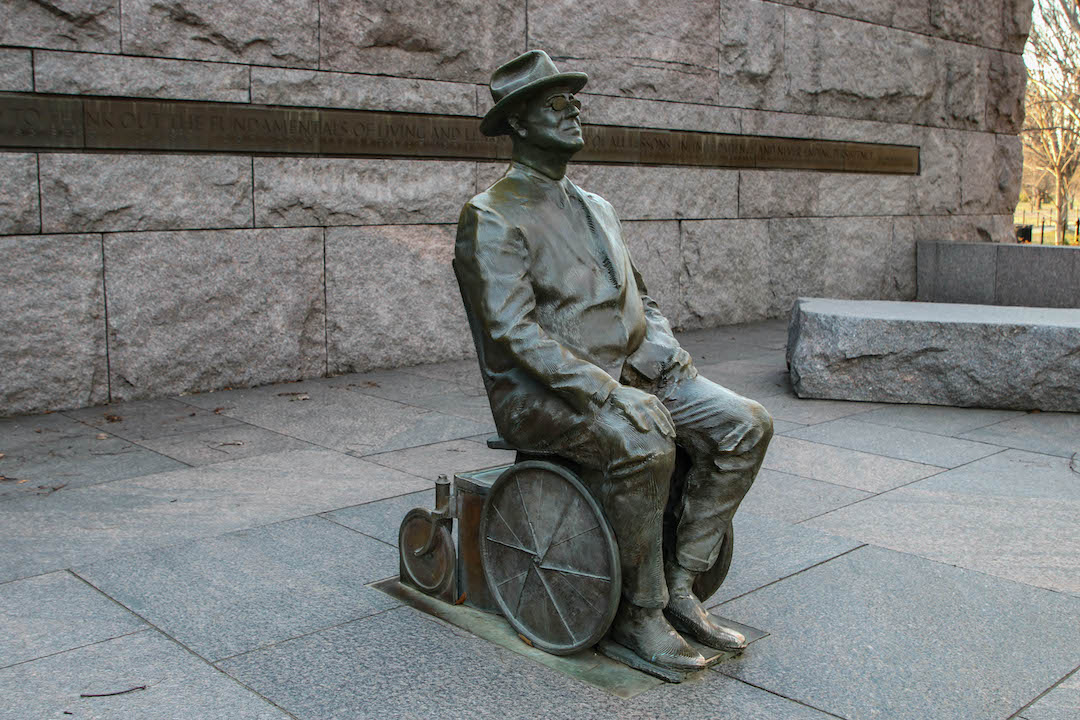Last week marked the Americans with Disabilities Act anniversary – a law signed 31 years ago as a result of a decades-long fight from the disability advocacy community that legally recognized for the first time the exclusion of people with disabilities as discrimination.
To mark this historic date the FDR Memorial Legacy Committee held its first wreath-laying ceremony to honor disability leaders – especially those who fought a six-year campaign to have President Roosevelt accurately depicted in his wheelchair at the FDR Memorial in Washington, DC.

To better understand the importance of honoring those who fought for disability equality in the past, while acknowledging there is so much work that remains to make this country truly accessible for everyone, Ketchum spoke with Mary Dolan, executive director of the FDR Memorial Legacy Committee.
Why is it important for the FDR Memorial to depict President Roosevelt as a wheelchair user?
Many say that FDR hid his disability. While there was an understanding with the press of that time to refrain from photographing him in his wheelchair, there were many times when FDR lived an openly disabled life. The historical truth is that he was a daily wheelchair user and therefore should be depicted as such. Disability is not a stigma and is not to be hidden. We must also remember that memorials are for future generations. Children who see FDR’s disability see themselves and all that is possible for them in life and work. A visit to the monument is a teachable moment. Much can be understood about FDR and his administration through the lens of disability.
What are the lessons that we can learn from the legacy of FDR and Eleanor Roosevelt?
Both FDR and Eleanor were, in today’s parlance, “influencers.” Their impact continues today. While neither were perfect, they moved society and the world forward in many important ways, especially in civil and human rights and peace. From the New Deal to the UN Human Rights Declaration, their work is all around us today.
How has the pandemic highlighted or exacerbated the existing barriers for people with disabilities?
COVID-19 has ravaged the disability community. From the inability to provide services for disabled students in schools to the high rate of deaths among the disabled, people with disabilities bore the brunt of COVID-19. We must continue to advocate for resources and support for people with disabilities who are at disproportionate risk.
How can we expand inclusivity for those with disabilities in our national memorials and beyond?
All memorials and cultural sites need to be developed from bricks and mortar, to educational and visitor programming using the principles of Universal Design, a framework for the design of living and working spaces and products to be accessible to the widest range of people possible. Everything can be and needs to be accessible. It is the law. And that no longer just means having a ramp. It means full access to the information and experience at that location. There are ways to do it through technology, tactile devices, audio and so much more.
We will continue to promote inclusivity and equality by supporting the FDR Memorial Legacy Committee’s mission to document, preserve, and share the leadership and legacy of the disability community’s campaign for disability representation at the FDR Memorial and beyond. To learn more, visit the FDR Memorial Legacy website.
The FDR Memorial Legacy Committee is a pro bono client of Ketchum.



